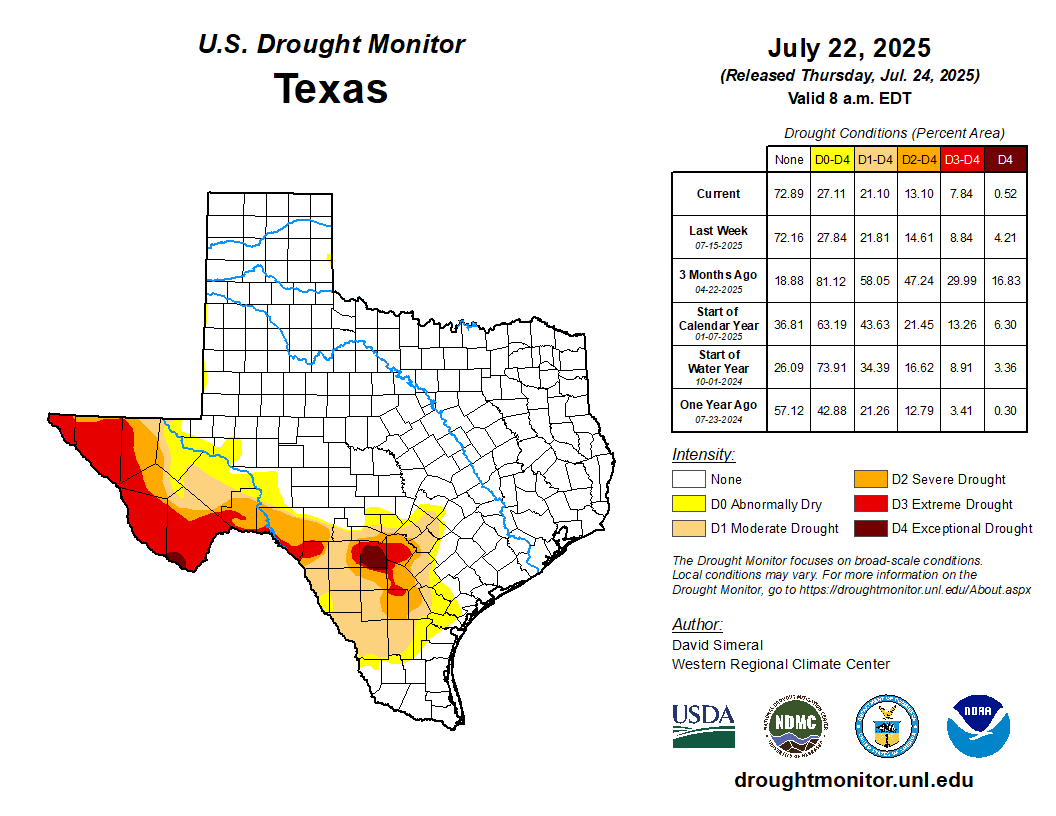After the Flood: What Texas must do next
This is a preview of our Texas 2036 newsletter with what you need to know about what the state must do next after the Texas floods. To receive this weekly look at our work, sign up here.
After the Texas flood: Building for tomorrow
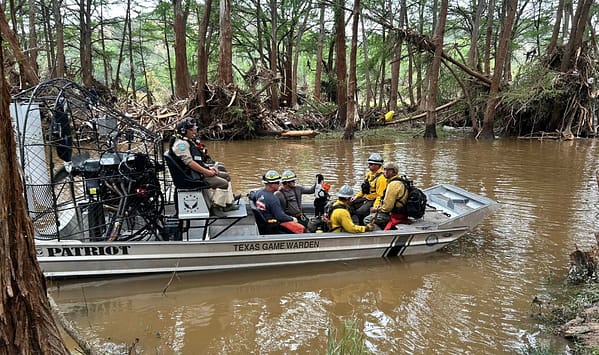
Texas A&M Forest Service sawyers ride with game warden and search and rescue team on the Guadalupe River in Kerr County. (Credit: Texas A&M Forest Service)
Over the July Fourth weekend, Central Texas faced one of the worst flood disasters in recent memory. Lives were lost, homes destroyed and communities upended.
As the region begins the long road to recovery, state leaders are convening at the Capitol for a special session to consider how we can prevent future tragedies like this one. This is a critical time to invest in infrastructure that saves lives, protects homes and strengthens communities.
Let’s take a look at how these recent disasters, this fall’s Proposition 4 vote and the future of our water infrastructure are all connected.
Texas flooding is on the rise, data shows
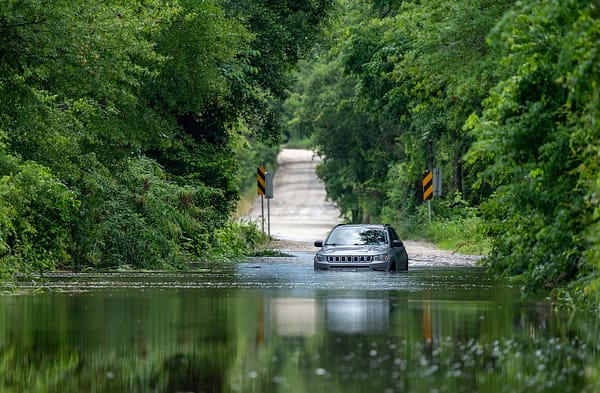
Source: Courtney Sacco/Texas A&M AgriLife
Severe weather isn’t new to Texas, but the growing intensity of extreme events calls for a stronger response.
Our 2024 report, “Future Trends of Extreme Weather,” produced in partnership with the Texas State Climatologist, shows a 5% to 15% increase in extreme one-day heavy rainfall since the late 20th century. This trend is expected to significantly raise flood risks across the state.
Why it matters: Texas weather may be unpredictable, but the data is clear. We have the insight today to make bold, forward-looking investments that can protect communities tomorrow.
What steps lawmakers took this year
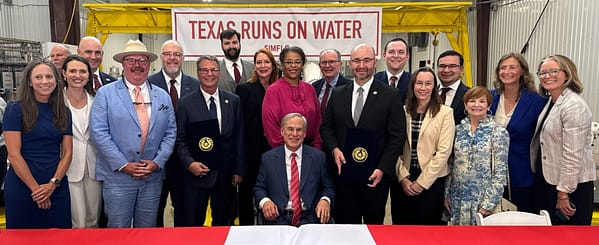
During the regular session earlier this year, lawmakers prioritized water infrastructure funding, including water supply and flood control projects, and addressing aging infrastructure.
This historic change in financial strategy reflects the broader recognition that water infrastructure is essential to communities’ safety and the state’s continued growth and prosperity.
What was passed: In June, Gov. Greg Abbott signed Senate Bill 7, which establishes a dedicated revenue stream for the Texas Water Fund. Its companion constitutional amendment, House Joint Resolution 7, will be on the ballot this fall as Prop 4.
What’s next: If voters approve Prop 4 this November, Texas can unlock up to $20 billion for water infrastructure over the next 20 years without raising taxes. These investments would fund new water supplies, modernize aging infrastructure and help protect communities statewide from both drought and flooding.
Texas Legislature tackles flooding in SB 7
Since 2019, the state’s Flood Infrastructure Fund has provided around $670 million for projects such as drainage improvements, warning systems and flood protection studies.
Under SB 7, Texas’ Flood Infrastructure Fund would be eligible to receive funding from the Texas Water Fund administered by the Texas Water Development Board. This change expands the opportunity to pay for needed flood control and mitigation projects in the decades ahead.
Did you know? The total cost of recommended Texas flood projects, mitigation and management is $54.5 billion.
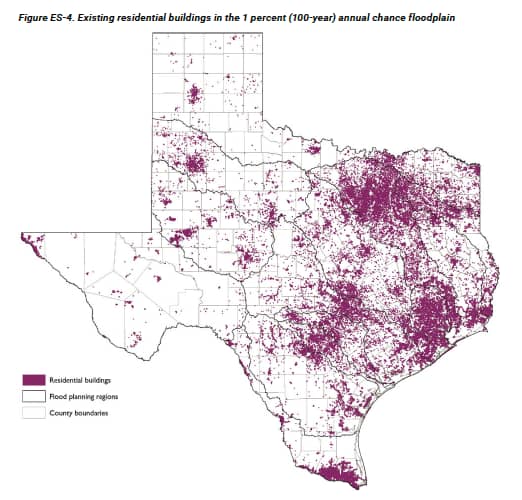
Source: Texas Water Development Board’s “2024 State Flood Plan.”
2025 Special Session: Emergency preparedness

While state leaders have already taken major steps this year to address water and flood infrastructure needs, the recent flood disaster has spurred renewed discussions during the special session that started on Monday.
During the session, lawmakers will consider additional legislation on flooding and emergency preparedness following this month’s catastrophic flood events.
Here’s what’s on the agenda:
- Flood warning systems: Improve early warning systems and other preparedness infrastructure in flood-prone areas throughout Texas.
- Flood emergency communications: Strengthen emergency communications and other response infrastructure in flood-prone areas throughout Texas.
- Natural disaster preparation and recovery: Evaluate and streamline rules and regulations to speed preparedness for and recovery from natural disasters.
- Relief funding for Hill Country floods: Provide relief funding for response to recovery from the storms which began in early July 2025, including local match funding for jurisdictions eligible for FEMA public assistance.
What to know: On Wednesday, Senate and House Select Committees on Disaster Preparedness and Flooding met to discuss the state’s response to the July 4 flooding in Central and West Texas.
Still, drought remains an ongoing issue
“Texas is a land of eternal drought,
interrupted occasionally by biblical floods.”
– Isaac Cline, 19th-century Galveston meteorologist
Our extreme weather report found that droughts are likely to grow more severe with hotter temperatures and greater rainfall variability. This trend will accelerate strains on our rivers, reservoirs and aquifers.
While some areas received heavy rainfall this month, many parts of Texas remain in drought. As of Thursday, Far West Texas is facing extreme drought, San Antonio is experiencing extreme drought and South Texas is seeing conditions that range from abnormal to moderate and severe, the U.S. Drought Monitor reports.
We’re focused on the long-term
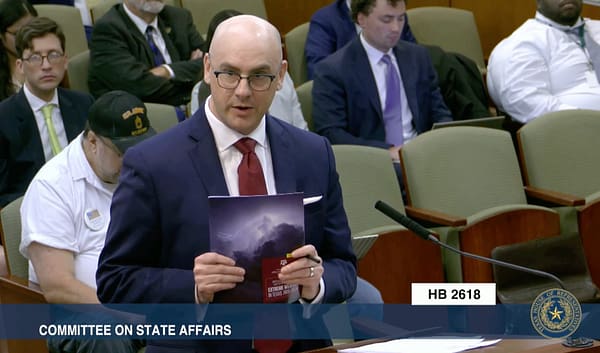
Director of Infrastructure and Natural Resources Policy Jeremy Mazur holds Texas 2036’s “Future Trends of Extreme Weather” report while testifying on extreme weather planning during the 89th Texas Legislative Session.
At Texas 2036, we are focused on the future. Since releasing our first-of-its-kind weather report in 2020, no other effort has matched its scope. That’s why Texans have turned to us as the leading source on how extreme weather is impacting their communities and strategies for keeping them safe and strong.
This year’s legislative session laid the groundwork, but Texas’ future depends on what happens next. We must modernize aging pipes, prepare for the next megastorm and secure clean water for 10 million more Texans.
That is why long-term investment, including Prop 4 on the November ballot, is critical. Planning today helps build a more resilient Texas prepared for the challenges of tomorrow.
Join us in building a water-secure Texas
As extreme weather becomes the norm and millions more Texans depend on a strained system, your support helps us do what no one else does: tie it all together with data, strategy and urgency.
Together, we can ensure the next generation never has to wonder if their water will be there when they need it.
Let us be your go-to resource
Help support Central Texas flood victims:
Texas water:
- SB 7 signed: Securing Texas’ water future
- Takeaways from the 89th Lege: Regional solutions for water

